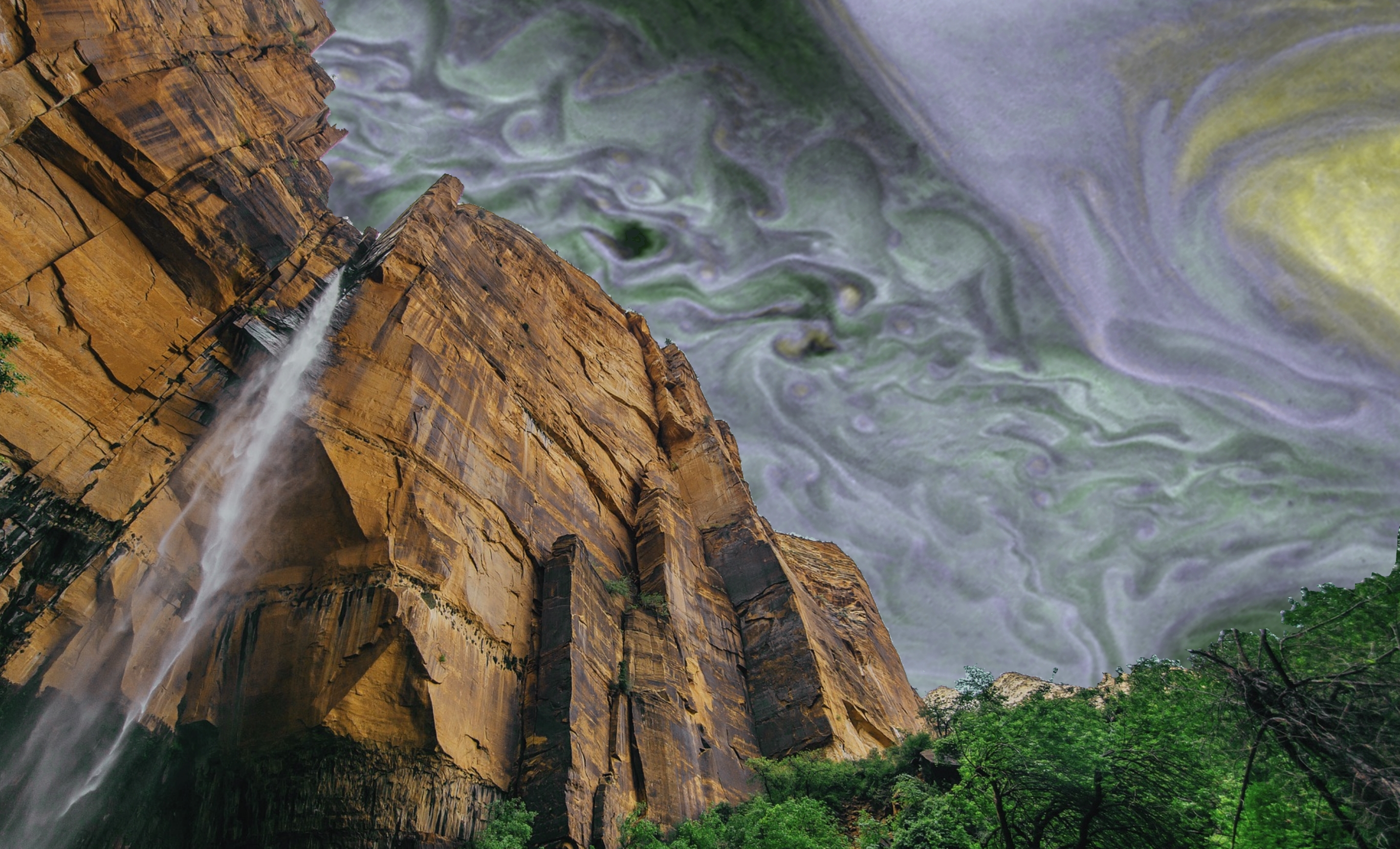Kainar
The kainar is a large predatory species native to Chellok and can be found throughout the continent. It is one of the fastest carnivorous land animals, capable of running up to 55 km/h.
Description
Anatomy
- Ears and nose - The organs for hearing and smelling, which commonly evolved as separate organs in species native to the moon of Prakyun, are combined in kainars and several other species native to Chellok. Kainars' rounded "nose-ears" sit on the top of it's head and are the main method of respiring.
- Eyes - Kainars have four eyes: one large black compound eye made up of several hundred thousand individual lenses that stretches across the creatures skull providing a 270-degree field of vision, and three small "simple" eyes which are used for detecting subtle changes in infrared, visible, and ultraviolet light.
- Mouth - Lacking a jawbone, the kainar mouth is made up of a thick ring of strong, flexible muscles, lined with horn-shaped inward facing teeth and a tough, sharp rasping tongue. Normally the kainar's mouth looks like a toothless, pink spherical orifice, but when hunting, the kainar will violently evert it's mouth, i.e. snap it's muscles to launch its teeth forward at prey in order to latch on. Once a kainar's teeth are dug into its prey's flesh, they do not come out without major injury unless the kainar releases. Once the prey tires, the kainar will use its tongue to rasp the prey's flesh, slowly drinking it's blood, then moving on to muscle, organ, and finally bone. In fact a direct translation of the Sugranese name, kainar, means 'bone-crush.'
- Tail and anal glands - Several glands line the underside of the kainar's tail and inside of the anus and rectum. These produce a white, sticky oil that is primarily pasted on plants and rocks to mark territory and communicate readiness for sexual reproduction during Chellokan spring.
- Scutal ridge - There is a long spiky scute, or plate, that runs down the back of kainars. Although it is extremely hard, it is made of something more similar to cartilage than bone. It is covered in thin skin and contains many tiny blood vessels, to which blood flow is increased and decreased in order to communicate signals. It may also be used to help regulate body temperature.
- Spines - Protruding from the sides of kainars are long thick black spines that curve down and hang under its torso ending in sharp points. The shell of these spines is made of the same hardened cartilage as the scutal ridge. Inside each of the spines is a branch of the kainar's interconnected hepato-liver, which is responsible for creating the strong digestive enzymes used to break down the bones of prey and also filter out and break down toxins in the kainar's blood.
Build
Kainars vary widely in size throughout their life cycle. Young adults are around 75cm tall at the shoulder and 1.2m in length from head to tail weighing ~35kg; however, kainars never stop growing during adulthood and gigantic specimens over twice the height and length and weighing over 200kg have been observed. The high speeds of the kainar are achievable due to the creature having four muscular legs which all flex backwards under the torso. The lower third of each leg is a non-retractable pointed hoof-claw appendage that helps the kainar grip the ground to turn and accelerate quickly. An adult kainar's forelegs are longer than the hindlegs, and at full sprint the kainar will take several strides with the hindlegs per single stride of the forelegs. During hunting, this upright gallop gives an intimidating appearance and frees the forelegs for slashing, piercing, or bringing down prey."Yu nawanna pikup datwun stik. Trus in me." — Sikram Kusum, stick picker-upper
Behavior
Kainars are generally hunters although they do scavenge, especially on larger prey, like buram and sedion. Packs, or as they are more commonly known by the sugran name, kainarrat, take one of three social formations:- A family pack formed around a female and her offspring
- A band of young adults
- Two adult males
"Look through the lens, my unbosomed. Do you see the kainarrat at the treeline? They are in kainar world, thinking kainar thoughts, smelling kainar smells. If you want to survive the day, you must leave our sugran world, cease your sugran thoughts. They have no meaning here. We are in their world now. See like them. Smell like them." — Yegeth Zol, sugran patriarch, to his child, Senem, about to set out on the gewin hunt.Kainars communicate primarily via smell and visual cues transmitted by altering the blood flow to the scutal ridge running down their spine, thereby changing its color. They paste or wipe the sticky white secretions of their anal and tail glands on plants and rocks to mark territory. The smell, like a melted or burnt plastic or wax, is very strong and can be picked up by humans several meters away. Kainars also produce a waxy secretion near the base of their scutal ridge and pectoral spines. These secretions are wet and viscous when secreted, but harden into a sticky, rubbery protective layer over the skin. These secretions have a putrid moldy smell when wet and a tangy soapy smell when dried. It is believed that these waxy skin secretions are also used for pack communication, including agreeing on when to leave on a hunt.
[WIP: Maybe one day, a really cool drawing of a kainar will be right here!]
"You human disgusted by kainar, but human is most wild and most dangerous animal on Chellok." — Korth Dezma
See also: Kainar spines




Comments